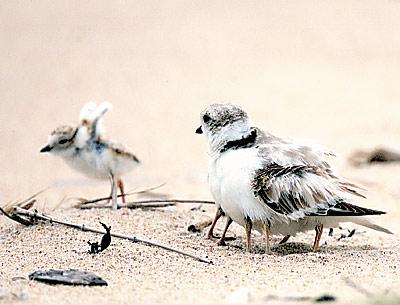Nature Notes: Going Native

Native plants not only produce stuff that you can eat, but also attract insects, so if you convert a lawn into a natural habitat and include different native plant communities — we’ll call them micro communities — you will increase diversity of the resident fauna to the max.
More and more local people are doing this.
Natural habitats with native Long Island plant communities attract native birds that live and breed in those communities. A number of native plants produce edible fruit and seeds for those native species that are either fructivorous or graniverous, or both. Eastern bluebirds, for example, are not seed eaters, but prefer fruit. Catbirds have similar dietary preferences. On the other hand, when feeding young, they are also insectivorus.
Many naturalists and ecologists have contributed much to the idea of supplanting lawns with habitat gardens. After all, if it weren’t for our English and French antecedents we wouldn’t have lawns at all.
Native Americans didn’t plant lawn grasses. Unless you have the stomachs and digestive systems of cows, horses, sheep, or goats, you can’t make a nutritious living eating grass. There are, however, native grasses which do not require mowing, which are attractive, and which provide edible seed for birds and other wildlife. And just think of all of the gasoline or electricity you will save in not having to mow back and forth, up and down, around and around every weekend like some of my neighbors, not to mention the benefits of not having to listen to the roar of those two-cycle engines.
The celebrated American ecologist Aldo Leopold wrote during the Depression and the dust bowl days about American plants that were drought resistant and habitat friendly. On Long Island we have our own Aldo Leopold and her name is Karen Blumer. Several years ago she authored “Long Island Native Plants For Landscaping: A Source Book.” The book was just that, a source for those who wanted to convert their high maintenance lawns into low maintenance wildlife habitats, and it amassed a following. Karen is a longstanding Long Island naturalist and an ardent environmentalist. She has come a long way since the publication of the book and now is revising it, making it even fuller and better for those of us who are Blumer followers.
Well versed in plants to begin with, she has taken on the redevelopment of several despoiled habitats, either directly or indirectly. When the Suffolk County Water Authority wanted to create a pleasant natural atmosphere for their wells, building, and water provisioning apparatus at their site on Accabonac Highway, they called on Karen. She was also instrumental in getting the contractors who replanted some of the sullied Brookhaven National Laboratory grounds in Upton to use not only native species but local genotypes, “provenance” species, as well. Thus the laboratory planted local sweet pepperbushes, a native wetland-edge species with aromatic white flowers, instead of importing them from New Jersey.
When East Hampton Town had a dilemma at Sammy’s Beach on Gardiner’s Bay after the contractors in 1999 created a hole the size of a professional football field, she suggested to me that the town use American beach grass to replant the area, and not any old beach grass such as the United States Department of Agriculture’s prize Cape America cultivar, but East Hampton beach grass, instead. Thus a large amount of local beach grass was pulled, carted over to Talmage Farms in Riverhead, and multiplied into more than 120,000 plants in a summer’s time, after which it was planted at Sammy’s Beach, in large part returning the area to its former self.
One of her newest approaches to the problem of replacing fields of Eurasian mugwort, mile-a-minute weed, Japanese knotweed, Asiatic bittersweet, Tartarian honeysuckle, phragmites, and the many, many other invasive plants that have taken over large areas of Long Island so that they are more European and Asian than American has to do not so much with planting natives, but letting them grow back in what is called “succession.” She has found, as have I, that many habitats that have been overrun with invasives still have the ability to spring back to their former selves when the invasives are removed.
It turns out that in most cases — even in the case of phragmites, or common reed, which form large monoclonal stands like another tall grass, bamboo — that the footprint of the replaced native community is not entirely obliterated. It lives on in the form of seeds, shoots, roots, and other vegetative matter that we collectively call propagules. It just needs to be liberated, in which case removal of the invasives is a paramount first step. In a little plot around an artificial pond on the east side of Lake Montauk, I found that Karen’s theory holds water. Cut down the phragmites (the only plant evident prior to the construction of the pond) and what did my wondering eyes behold? The immediate return of native sedges, grasses, wildflowers, and groundcovers.
Replanting a native habitat to replace a once-native habitat can be very chancy. You almost have to tend it like an ornate garden, which I have painfully discovered on other disturbed plots which didn’t turn out so well. Think of the complexity even a tiny native wetland, say a cranberry bog or shrubland, has built into it over time. Each member plant exists at the pleasure of all of the other natives in a close-knit symbiotic fashion. It’s not easy for even the most gifted gardener or landscaper to recapture such intricate complexity. But once the bad guys are removed, give it a little time and you will be fondly surprised by the outcome.
Remember that some of these native plants species are hundreds of times older than Homo sapiens in origin; they have a built-in self-knowledge that is hard to replicate.
